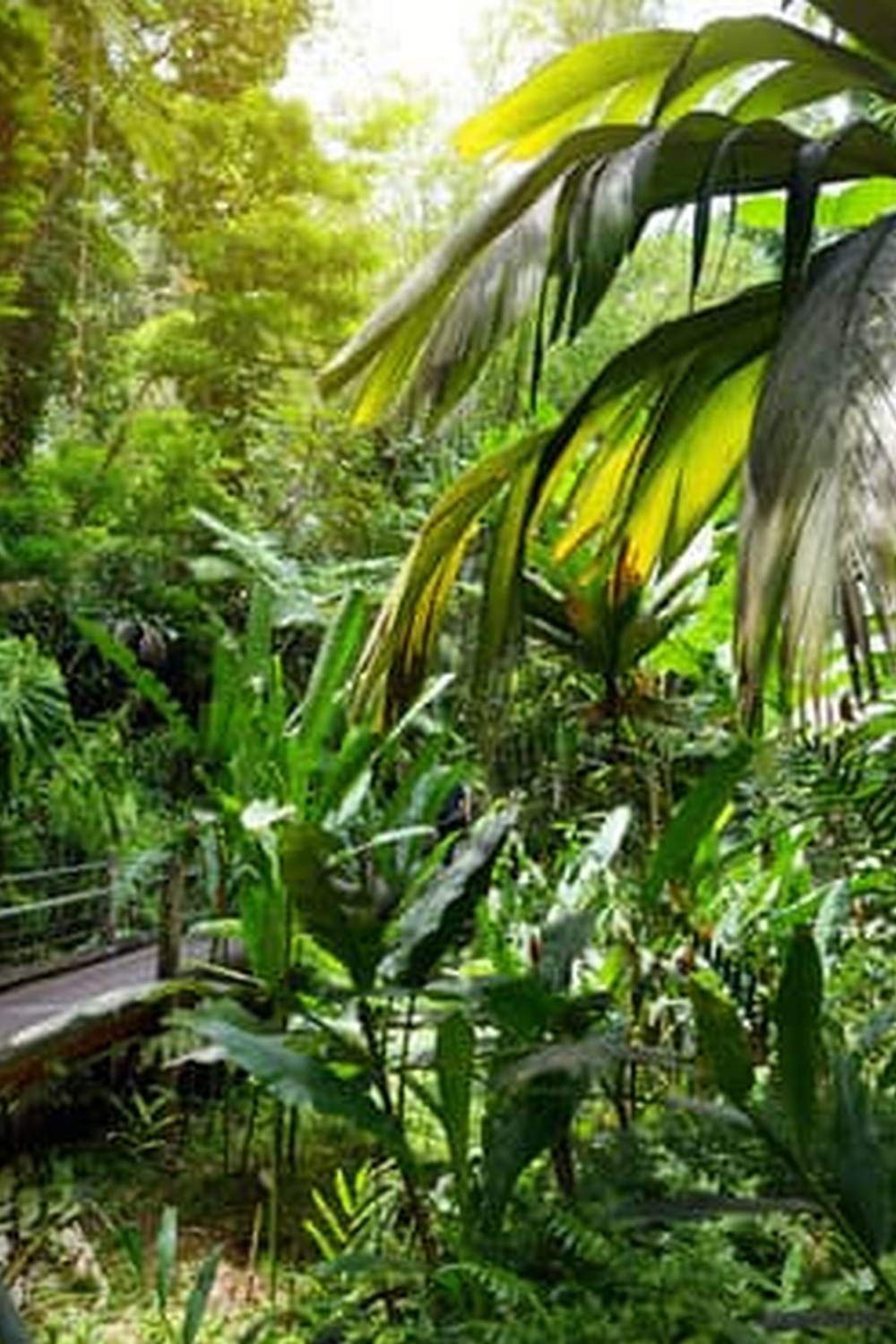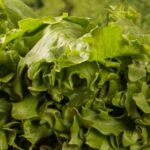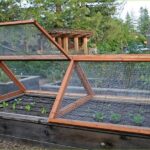Container vegetable gardening in Zone 6A presents unique challenges due to its specific climate, growing season, and environmental factors. Understanding the intricacies of this zone is crucial for successful cultivation. Zone 6A typically experiences cold winters and warm summers, with a shorter growing season compared to other regions. As such, choosing the right containers, plants, and techniques is essential for a thriving garden.
One of the key factors to consider when container gardening in Zone 6A is selecting suitable containers that can withstand temperature fluctuations. Frost-resistant materials like fiberglass, resin, or concrete are ideal choices to ensure durability during cold winter months. Additionally, proper drainage holes and adequate size containers are important for root development and plant growth.
When it comes to selecting vegetables for your container garden in Zone 6A, opt for cold-hardy varieties that can withstand cooler temperatures. Vegetables like lettuce, kale, carrots, and radishes are excellent choices that thrive in this climate.
It’s also important to consider the space requirements of each plant and how they will fare in a confined environment. By understanding the unique needs of both your plants and your zone, you can create a successful container vegetable garden in Zone 6A.
Choosing the Right Containers for Your Vegetable Garden
When embarking on container vegetable gardening in Zone 6A, selecting the right containers is crucial for the success of your plants. The choice of containers can impact the growth and health of your vegetables, so it’s essential to consider a few key factors before making a decision. Here are some tips on choosing the right containers for your vegetable garden:
- Size: Ensure that your containers are appropriately sized for the vegetables you plan to grow. Some plants require deeper pots for their roots to spread out, while others can thrive in smaller containers.
- Drainage: Proper drainage is essential for container gardening to prevent waterlogged soil, which can lead to root rot. Look for containers with drainage holes or be prepared to drill them yourself.
- Material: There are various options for container materials, such as terracotta, ceramic, plastic, or fabric pots. Each has its pros and cons in terms of insulation, weight, and aesthetics.
Additionally, consider the location of your container garden when choosing the right containers. If you plan to move them around frequently to catch sunlight or protect them from harsh weather conditions, lightweight pots may be more suitable.
Ultimately, selecting the right containers for your vegetable garden in Zone 6A can make a significant difference in the overall success of your growing season. Take time to assess your requirements and invest in quality containers that will provide a healthy environment for your plants to thrive. By making informed choices at this stage, you can set yourself up for a bountiful harvest later on.
Selecting the Best Vegetables for Container Gardening in Zone 6A
Container vegetable gardening in Zone 6A can be a rewarding experience, but it’s essential to choose the right vegetables that thrive in this specific climate. When selecting the best vegetables for your container garden in Zone 6A, consider factors such as sunlight requirements, space limitations, and plant size. Here are some top choices for vegetables that perform well in containers in Zone 6A:
- Tomatoes: Choose determinate varieties like ‘Patio’, ‘Celebrity’, or ‘Bush Early Girl’ that don’t require staking and produce a high yield of flavorful fruits.
- Peppers: Bell peppers, banana peppers, and jalapenos are excellent options for container gardening due to their compact size and ability to thrive in limited spaces.
- Herbs: Basil, parsley, chives, and mint are versatile herbs that do well in containers. They not only provide fresh flavors for your cooking but also attract beneficial insects to your garden.
In addition to these popular choices, leafy greens like lettuce, spinach, and kale are ideal for container gardening in Zone 6A. These vegetables can be continuously harvested throughout the growing season and are adaptable to various environmental conditions. Remember to provide adequate drainage for your containers and use high-quality potting mix enriched with organic matter to ensure proper growth.
Tips for Success
- Avoid overcrowding your containers by following spacing recommendations on seed packets or plant tags.
- Rotate crops each year to prevent soil-borne diseases and maintain soil fertility.
- Monitor your plants regularly for signs of nutrient deficiencies or pest infestations and take appropriate measures promptly.
By selecting the best vegetables suited for container gardening in Zone 6A and following these tips for success, you can enjoy a bountiful harvest of fresh produce right at your fingertips. With proper care and attention, your container vegetable garden can thrive throughout the growing season despite the challenges posed by the region’s climate.
Soil Preparation and Fertilization Tips for Successful Growth
Testing and Amending Soil
Before starting your container vegetable gardening in Zone 6A, it’s essential to test the soil in your containers. Purchase a soil testing kit from a local garden center or extension office to determine the pH level and nutrient content of your soil.
Most vegetables prefer a slightly acidic soil with a pH level between 6.0 and 7.0. If needed, amend the soil with organic matter such as compost, peat moss, or aged manure to improve its structure and fertility.
Choosing the Right Potting Mix
When selecting potting mix for your container garden, opt for a high-quality blend that is specifically formulated for vegetables. Look for mixes that are lightweight, well-draining, and rich in organic matter. Avoid using garden soil or topsoil in containers, as they can become compacted and hinder root growth. Additionally, make sure the potting mix is free of pests, diseases, and weed seeds to promote healthy plant growth.
Fertilizing Your Container Vegetables
Vegetables grown in containers require regular fertilization to thrive throughout the growing season. Choose a balanced fertilizer with equal parts nitrogen (N), phosphorus (P), and potassium (K) to promote healthy foliage growth, strong roots, and bountiful harvests. Start by mixing a slow-release granular fertilizer into the potting mix when planting your vegetables.
Then supplement with liquid fertilizer every two to four weeks during the growing season according to package instructions. Be mindful not to over-fertilize your plants as it can lead to nutrient imbalances or burn their roots.
Watering and Maintenance Techniques for Container Vegetable Gardens
Container vegetable gardening in Zone 6A requires special attention to watering and maintenance to ensure the success of your plants. The key to a thriving container garden is consistent moisture for your vegetables, as they rely on you to provide them with the water they need. In this zone, where summers can be hot and dry, it is crucial to establish a routine watering schedule.
One important tip for watering container vegetables in Zone 6A is to check the moisture level of the soil regularly. Stick your finger into the soil up to an inch deep – if it feels dry, it’s time to water. However, be cautious not to overwater your plants, as this can lead to root rot. To prevent this, make sure your containers have proper drainage holes at the bottom and use a well-draining potting mix.
In addition to watering, maintaining your container garden involves other essential tasks such as pruning, fertilizing, and monitoring for pests and diseases. Regularly prune dead or yellowing leaves to encourage healthy growth and airflow within the containers. Fertilize your vegetables according to their specific needs throughout the growing season to ensure they receive the necessary nutrients for robust development.
Keep an eye out for any signs of pests or diseases, such as yellowing leaves or wilting plants, and take action promptly using natural remedies or insecticidal soap if needed. By implementing these watering and maintenance techniques in your container garden in Zone 6A, you can enjoy a bountiful harvest of fresh vegetables throughout the growing season.
Dealing With Pests and Diseases in a Container Garden
When embarking on your container vegetable gardening journey in Zone 6A, it’s essential to be prepared for potential pest and disease challenges that may arise. By taking proactive measures and implementing effective strategies, you can minimize the impact of these issues on your plants.
One common pest that container gardeners often encounter is aphids. These tiny insects can quickly multiply and wreak havoc on your vegetables. To combat aphids, consider using natural predators like ladybugs or introducing beneficial insects such as lacewings to keep their population in check. Additionally, you can use insecticidal soap or neem oil as organic control methods.
Another prevalent issue in container gardening is fungal diseases like powdery mildew or damping-off. To prevent fungal infections, ensure proper air circulation around your plants by spacing containers accordingly. Avoid overhead watering, as moisture on leaves can promote disease development. Consider applying a preventative fungicide according to the recommendations for the specific vegetables you are growing.
Moreover, practicing good garden hygiene by regularly removing any debris or dead plant material from your containers can help prevent pests and diseases from establishing themselves. By staying vigilant and proactive in monitoring your plants for any signs of trouble, you can maintain a healthy and thriving container vegetable garden in Zone 6A.
| Pest/Disease | Prevention/Treatment |
|---|---|
| Aphids | Introduce beneficial insects like ladybugs or use insecticidal soap |
| Fungal Diseases | Ensure proper air circulation; avoid overhead watering; apply preventative fungicide |
Maximizing Space and Sunlight in a Small Area
Container vegetable gardening in Zone 6A can present some challenges when it comes to maximizing space and sunlight in a small area. However, with careful planning and strategic placement of your containers, you can make the most out of your limited garden space.
Vertical Gardening Techniques
One effective way to maximize space in a small area is by utilizing vertical gardening techniques. You can hang containers on walls or fences, use trellises for climbing vegetables like cucumbers or beans, or even invest in stackable containers that allow you to grow multiple plants in a small footprint. By going vertical, you can increase the amount of sunlight reaching your plants while also making the most out of your available space.
Utilizing Reflective Surfaces
Another strategy to maximize sunlight in a small area is by utilizing reflective surfaces. Placing mirrors or white surfaces near your containers can help bounce sunlight back onto your plants, increasing their overall exposure to light. Additionally, choosing light-colored containers can also help reflect sunlight onto the lower leaves of your plants, ensuring they receive adequate light for healthy growth.
Optimizing Plant Placement
When arranging your containers in a small space, it’s essential to consider each plant’s light requirements. Place taller plants towards the back of your garden area to prevent them from shading smaller plants. Additionally, rotating your containers throughout the day to ensure all sides receive adequate sunlight can help optimize plant growth. By being strategic in how you arrange your containers, you can create an efficient and productive vegetable garden despite space limitations in Zone 6A.
Harvesting and Preserving Your Container Garden’s Bounty
Once your container vegetable garden in Zone 6A has matured and produced a bountiful harvest, it’s time to enjoy the fruits of your labor. Harvesting your vegetables at the right time is crucial to ensure optimal flavor and nutrients.
Different vegetables have varying signs to indicate they are ready for harvest, such as color change, firmness, or size. By regularly checking on your plants and harvesting at the peak of ripeness, you can savor the freshest flavors from your container garden.
To extend the enjoyment of your homegrown produce beyond the growing season, consider preserving them through various methods. Canning, pickling, freezing, or drying are all excellent ways to store excess produce for later use.
Whether you prefer homemade tomato sauce in the winter or pickled cucumbers as a snack, preserving your harvest allows you to enjoy the taste of summer all year round. Additionally, sharing your preserved goods with family and friends can spread the joy of homegrown vegetables throughout your community.
In addition to traditional preservation methods, you can also explore creative ways to utilize your harvest. Experiment with new recipes that showcase the flavors of your container-grown vegetables or try making homemade sauces, jams, or salsas.
Embracing the versatility of your homegrown bounty can inspire culinary adventures in the kitchen while reducing food waste. By incorporating fresh ingredients from your container garden into everyday meals and special occasions, you can truly appreciate the rewards of nurturing a thriving garden in Zone 6A.
Extending the Growing Season in Zone 6A With Cold Frames and Row Covers
Container vegetable gardening in zone 6A can be a rewarding and fulfilling experience, despite the challenges that come with the climate and growing season. By understanding the unique characteristics of this zone, such as its cooler temperatures and shorter growing season, gardeners can make informed decisions on selecting the right containers, vegetables, and gardening practices. Choosing containers that are suitable for the specific needs of plants is crucial for successful growth in this region.
To ensure a thriving container garden in zone 6A, proper soil preparation and fertilization are essential. Using high-quality potting mix and incorporating organic matter can provide the necessary nutrients for healthy plant development. Additionally, regular watering and maintenance techniques are vital to sustain optimal growth throughout the season. By being diligent in monitoring water levels and addressing any issues promptly, gardeners can prevent common problems associated with container gardening.
Furthermore, extending the growing season in zone 6A can be achieved through the use of cold frames and row covers. These protective structures help insulate plants from frost and maintain a stable temperature during colder months, allowing vegetables to flourish beyond their typical growing period. By implementing these techniques along with careful planning and attention to detail, gardeners in zone 6A can enjoy a bountiful harvest from their container gardens year-round.
Frequently Asked Questions
What Vegetables Grow Best in Zone 6a?
In Zone 6a, vegetables like tomatoes, peppers, cucumbers, zucchinis, and beans thrive the best. These warm-season crops need plenty of sunlight and well-draining soil to produce a bountiful harvest.
What Veg Is Best for Container Gardening?
When it comes to container gardening, certain vegetables excel due to their compact size and shallow root systems. Vegetables like lettuce, radishes, herbs (like basil and parsley), cherry tomatoes, and peppers are ideal for containers as they don’t require a lot of space to grow.
What Is the Difference Between Zone 6a and 6b?
The main difference between Zone 6a and 6b lies in the average minimum winter temperatures each zone experiences. Zone 6a has slightly colder temperatures than Zone 6b, with minimum winter temperatures ranging between -10 to -5 degrees Fahrenheit compared to -5 to 0 degrees Fahrenheit in Zone 6b.
This variation impacts the types of plants that can survive winter in these zones.

If you’re looking to get into vegetable gardening, or are just looking for some tips on how to make your current garden better, then you’ve come to the right place! My name is Ethel and I have been gardening for years. In this blog, I’m going to share with you some of my best tips on how to create a successful vegetable garden.





